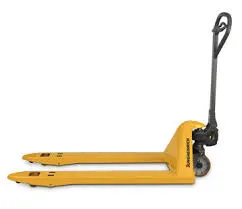


The Working Principle of Chain Hoists
Chain hoists are indispensable tools used in various industries for lifting and moving heavy loads. Their design is relatively simple, yet the efficiency they offer is unparalleled. In this article, we will delve into the working principle of chain hoists, exploring their components, operation, and applications.
Components of a Chain Hoist
A chain hoist consists of several key components that work together to facilitate lifting. The main components include
1. Chain The chain is a crucial element that connects the load to the hoist mechanism. It is typically made of high-strength steel to withstand significant loads.
2. Hook The hook is attached to the end of the chain, providing a means to connect the hoist to the load. Hooks come in various styles, such as fixed or swivel, to accommodate different lifting situations.
3. Pulley System The hoist features a pulley system that helps guide the chain and distribute the load effectively. Pulleys reduce the friction encountered when lifting heavy items and allow for smoother operation.
4. Drive Mechanism This component can be manual or powered. Manual chain hoists require the operator to pull on the chain to lift the load, while powered hoists use electric or pneumatic motors to automate the lifting process.
5. Brake System Safety is paramount when lifting heavy loads. A reliable brake system is built into the hoist to prevent accidental descent of the load. It engages automatically when the lifting action stops, securing the load in place.
How Chain Hoists Work

The operation of a chain hoist hinges on the mechanical advantages gained from its design. When the operator pulls the chain (in a manual hoist) or activates the motor (in an electric hoist), the following sequence occurs
1. Chain Movement Pulling the chain causes it to move over the sprockets or pulleys arranged in the hoist. The chain wraps around these pulleys, which helps lift the attached load.
2. Load Elevation As the chain moves, the hook connected to the load is elevated. The mechanical advantage created by the chain and pulley system allows the operator to lift significantly heavier objects with relative ease.
3. Stability and Control The design of the chain hoist ensures that the load remains stable while being lifted. The brake system plays a vital role in controlling the descent of the load, allowing for precise placement.
4. Releasing the Load Once the load has reached the desired height, the operator can use the brake to securely hold the load in place before removing it. This feature is particularly beneficial in applications where precise load positioning is necessary.
Applications of Chain Hoists
Chain hoists are widely used across various sectors, including
- Construction For lifting heavy materials such as beams, blocks, and equipment to various heights. - Manufacturing In assembly lines where components need to be lifted and positioned accurately. - Shipping and Warehousing To assist with loading and unloading heavy cargo from trucks and ships. - Automotive For lifting engines and heavy parts during repair and maintenance activities.
Conclusion
The working principle of chain hoists embodies a blend of simplicity and efficiency. By leveraging the mechanical advantage of chains and pulleys, these tools allow workers to lift heavy loads safely and effectively. Their versatility and reliability have made them a staple in various industries, proving that even the simplest mechanisms can have a significant impact on operational efficiency and safety. Understanding how chain hoists work helps users appreciate their value in the modern workplace, ensuring that heavy lifting tasks are accomplished with ease and safety.



